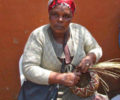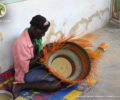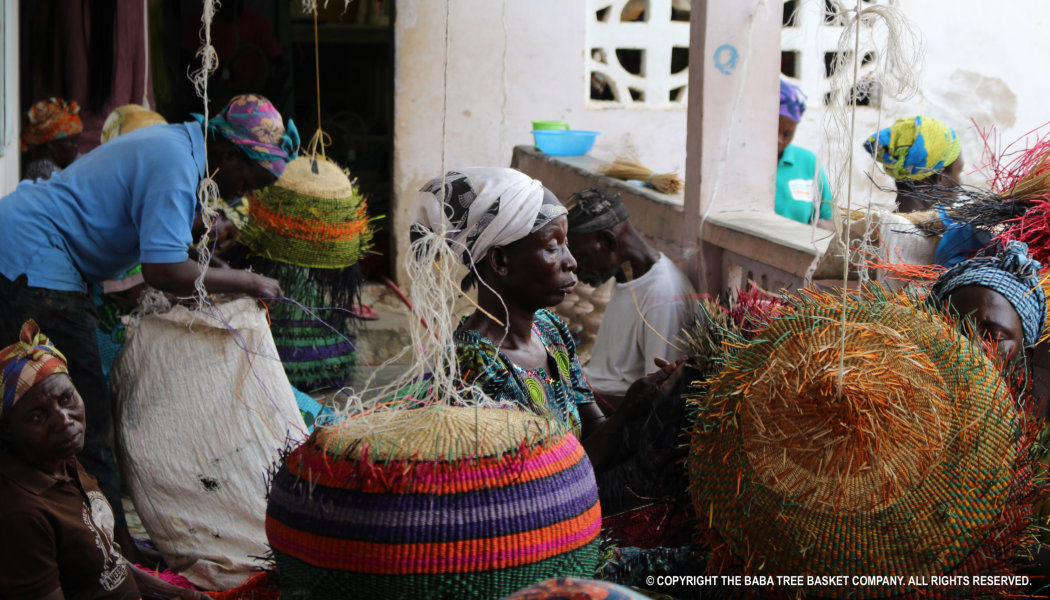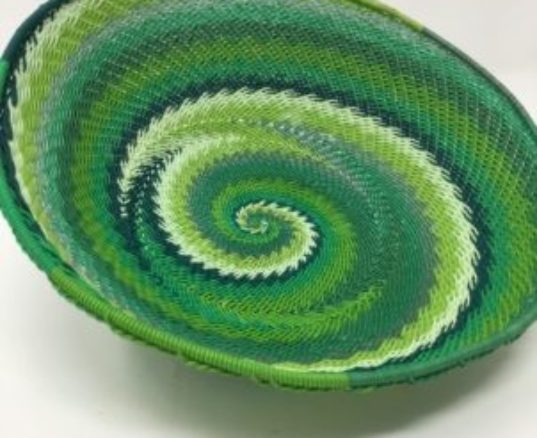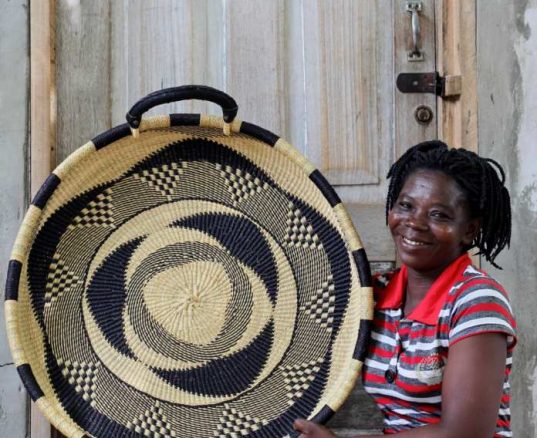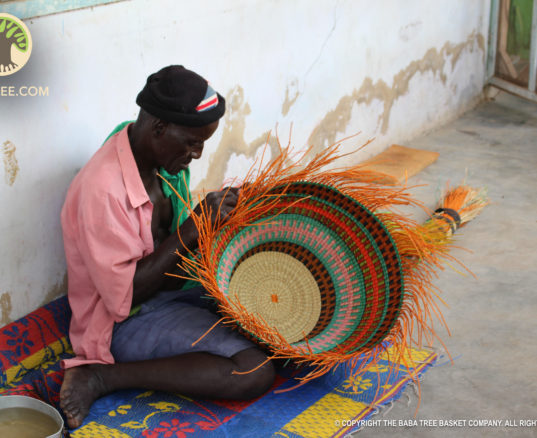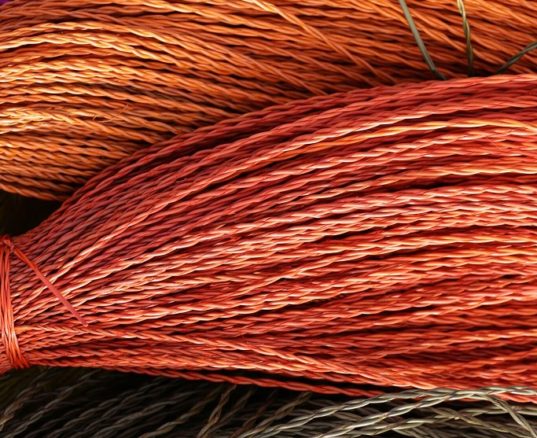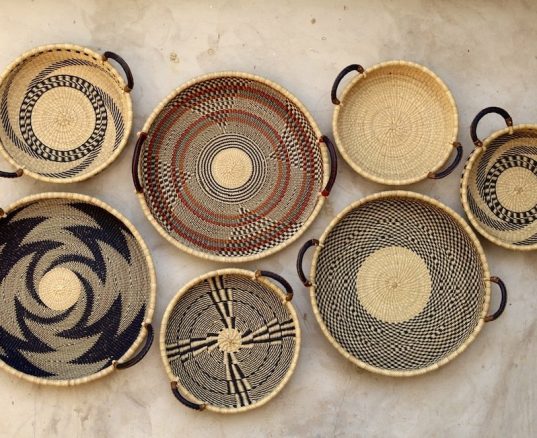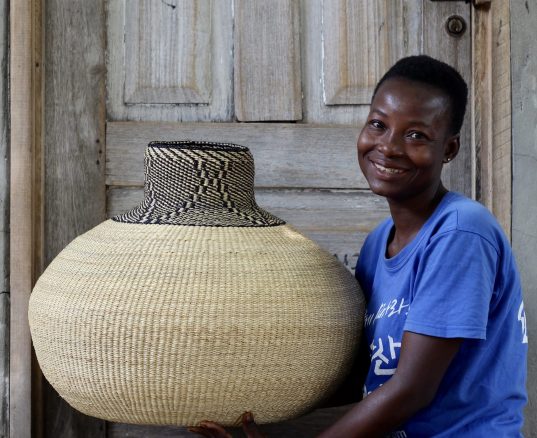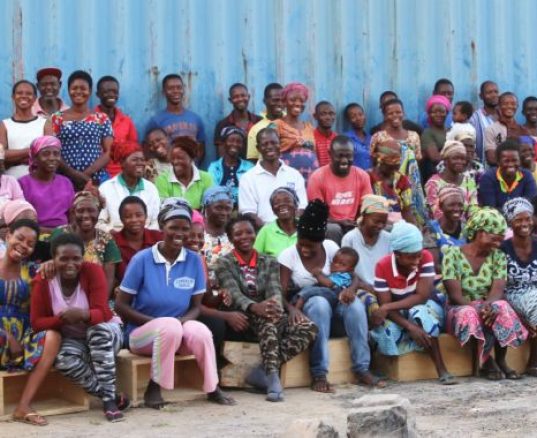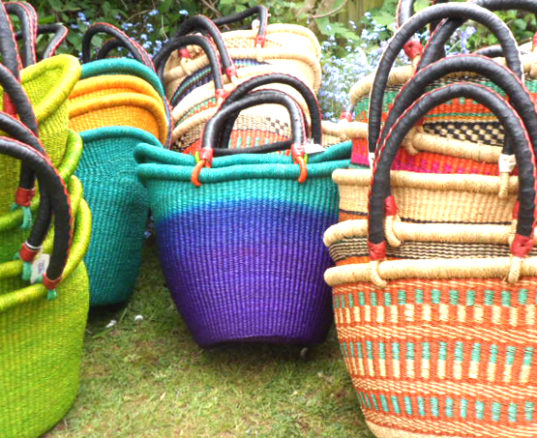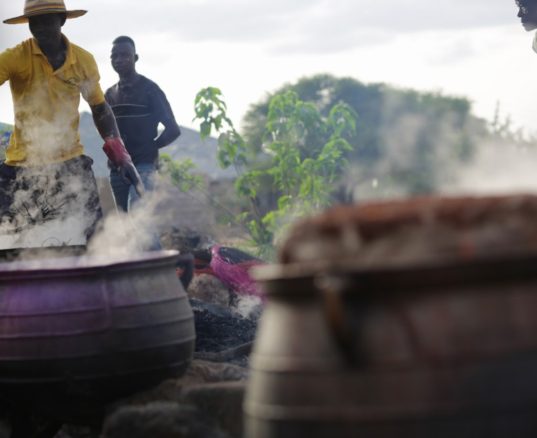Have you ever wondered why something is made in a specific place and then gives it it’s name? Well, in terms of the Bolga Basket, there are of course some very good reasons why this distinctive colourful basket came to be.
The main reason for basket weaving in this region is due to the poor fertility of the soil around Bolgatanga, making it unsuitable for extensive agricultural activities. The region also suffers from erratic rainfall patterns and harsh weather conditions, meaning they can only grow enough to sustain their families, leaving nothing to take to market. As a result of these circumstances, many of the women supplement their household incomes with handicraft activities such as basket weaving, leather work and pottery.
The richly coloured Bolga basket made from dried elephant grass comes from Northern Ghana. The grass itself is a commercial product sold in regular bundles of the same length in Kumasi over 500km south of Bolgatanga. The bright colours that give the baskets their unique appeal are derived from industrial pigments.
Traditionally baskets were used as colanders to separate millet and water from the millet waste. The colourful baskets available today have been developed through extensive contact with foreign buyers over the years.

